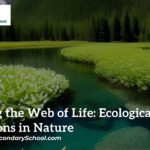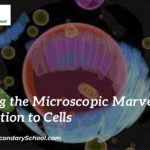Plant vs Animal Cells
The intricate tapestry of life is woven from a myriad of cells, each with its own unique structure and function. Within this diversity, plant and animal cells stand as two distinct yet interconnected realms, embodying the complexity and beauty of life on Earth. As we delve into the world of cellular biology, we uncover the fascinating contrasts and surprising similarities between these two types of cells.
Plant Cells: The Architects of Photosynthesis
Plant cells, the foundational units of plants, are renowned for their role as the primary producers in ecosystems. They possess a rigid cell wall composed of cellulose, providing structural support and protection. This wall sets them apart from animal cells, which lack this outer casing.
Chloroplasts, the chlorophyll-rich organelles within plant cells, orchestrate the remarkable process of photosynthesis. These organelles convert sunlight into energy, producing glucose and oxygen from carbon dioxide and water. This capability is one of the defining features of plant cells and is responsible for their lush green appearance.
Vacuoles, large membrane-bound sacs within plant cells, play a crucial role in maintaining turgor pressure and storing nutrients and waste products. They are larger and more prominent in plant cells than in animal cells.
Animal Cells: The Masters of Mobility
Animal cells, the foundation of the animal kingdom, have a more flexible and fluid structure compared to the rigid walls of plant cells. They lack chloroplasts and cell walls but instead possess a plasma membrane, which regulates the movement of substances in and out of the cell.
One of the distinguishing features of animal cells is the presence of lysosomes, membrane-bound organelles containing digestive enzymes. These enzymes break down cellular waste, foreign invaders, and even damaged organelles, contributing to the cell’s overall health and maintenance.
Centrioles, organelles involved in cell division, are exclusive to animal cells. They play a critical role in organizing microtubules during cell division and ensuring accurate chromosome segregation.
Shared Components: Unity in Diversity
Despite their differences, plant and animal cells share a core set of organelles and structures. The nucleus, the command center of the cell, directs cellular activities and houses genetic information. Both cell types also possess mitochondria, which generate energy through cellular respiration.
The endoplasmic reticulum, Golgi apparatus, and ribosomes are involved in protein synthesis, modification, and transport in both plant and animal cells. These structures illustrate the shared molecular machinery that underlies the essential processes of life.
Interdependence in Ecosystems
The distinctions between plant and animal cells reflect their respective roles in ecosystems. Plants harness energy from the sun, converting it into organic matter through photosynthesis. Animals, in turn, rely on plants for sustenance, directly or indirectly. The interdependence of these cellular worlds forms the basis of Earth’s complex food webs and ecological relationships.
In Conclusion
The study of plant and animal cells invites us to marvel at the diversity and unity that define life. These cells, though different in structure and function, are integral pieces of the intricate puzzle of living systems. The contrasting features of plant cells, adapted for photosynthesis and structural support, complement the dynamic capabilities of animal cells, designed for mobility and a versatile range of functions. As we explore the realms of cellular biology, we uncover not only the richness of life’s tapestry but also the shared threads that bind all living things together.




